When Galaxies Collide: Photos of Great Galactic Crashes
Arp 142: When Galaxies Collide
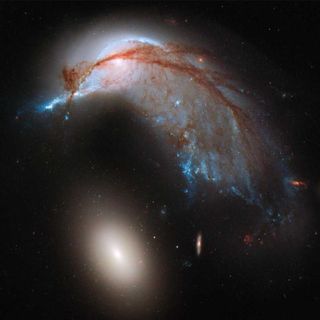
This image shows the two galaxies interacting. NGC 2936, once a standard spiral galaxy, and NGC 2937, a smaller elliptical, bear a striking resemblance to a penguin guarding its egg. Image released June 20, 2013.
When Galaxies Collide
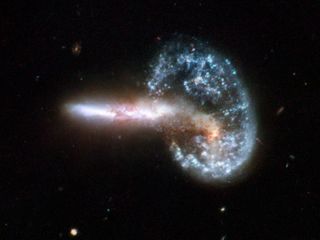
Arp 148 is the staggering aftermath of an encounter between two galaxies, resulting in a ring-shaped galaxy and a long-tailed companion.
Colliding Galaxies Swirl in Dazzling New Photo
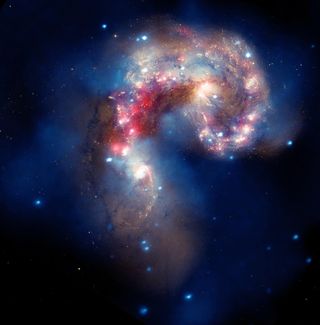
This beautiful composite image of two colliding galaxies was released by NASA's Great Observatories. The collision between the Antennae galaxies, which are located about 62 million light-years from Earth, began more than 100 million years ago and is still occurring.
VV 340 Galaxy Collision Forms Exclamation Point

The deep space object VV 340, also known as Arp 302, is a textbook example of two colliding galaxies in a crash that will take millions of years. VV 340 is 450 million light-years from Earth. This image was released Aug. 11, 2011.
New Look at a Colossal Cosmic Collision
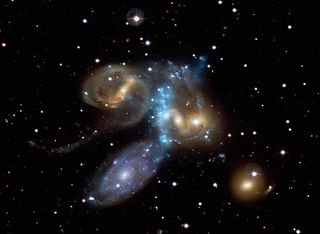
This beautiful image gives a new look at the interacting galaxies of Stephan's Quintet. The curved, light blue ridge running down the center of the image shows X-ray data from the Chandra X-ray Observatory. Four of the galaxies in the group are visible in the optical image (yellow, red, white and blue) from the Canada-France-Hawaii Telescope. A labeled version (roll over the image above) identifies these galaxies (NGC 7317, NGC 7318a, NGC 7318b and NGC 7319) as well as a prominent foreground galaxy (NGC 7320) that is not a member of the group.
Hubble Photographs Colliding Galaxies
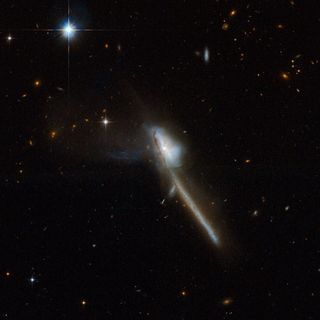
Markarian 273 is a galaxy with a bizarre structure that vaguely resembles a toothbrush. The "handle" of the brush is about 130 thousand light-years long and is strongly indicative of a merger between two galaxies. Markarian 273 has an intense region of starburst, where 60 solar masses of new stars are born each year. The galaxy is located 500 million light-years away from Earth.
Merging Galaxies, Active Black Holes
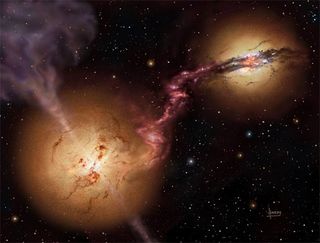
This illustration of a system called 4C60.07 shows two colliding galaxies, one of which (left) has already turned most of its gas into stars and its black hole is ejecting jets of charged particles. This galaxy is pulling gas and dust from the neighboring galaxy, where star formation is occurring.
Get the Space.com Newsletter
Breaking space news, the latest updates on rocket launches, skywatching events and more!
Galactic Collisions Leave Cosmic Skid Marks
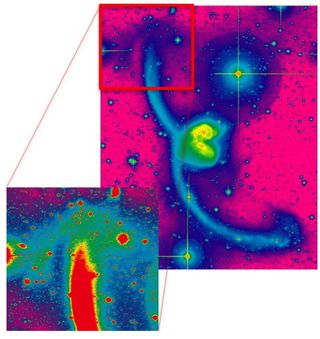
This deep optical image of the Antennae galaxies (main image) shows new tidal debris at the northern tip (inset) that have resulted from two colliding galaxies.
Galaxy Collisions Distort

These images, taken with the 2.1-meter telescope at Kitt Peak National Observatory in Arizona, show galaxy shapes that are either physically intertwined or distorted by the gravity of nearby neighbors.
The Milkomeda Galaxy
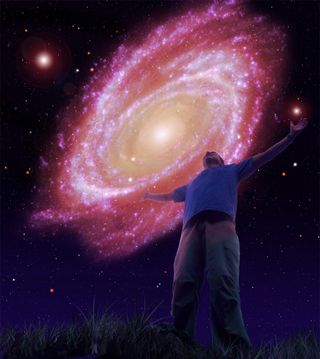
This artist's conception shows the Milkomeda Galaxy, the result of the predicted collision between the Milky Way and its neighbor Andromeda a trillion years from now.
Evolving, Merging Galaxies
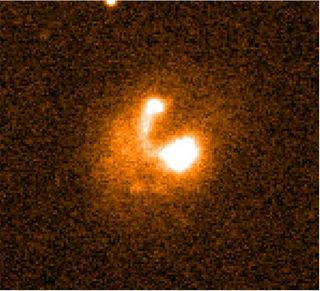
Two interacting galaxies in the Perseus cluster about 300 million light years away provide new clues to how galaxies evolve.
Join our Space Forums to keep talking space on the latest missions, night sky and more! And if you have a news tip, correction or comment, let us know at: community@space.com.

Space.com is the premier source of space exploration, innovation and astronomy news, chronicling (and celebrating) humanity's ongoing expansion across the final frontier. Originally founded in 1999, Space.com is, and always has been, the passion of writers and editors who are space fans and also trained journalists. Our current news team consists of Editor-in-Chief Tariq Malik; Editor Hanneke Weitering, Senior Space Writer Mike Wall; Senior Writer Meghan Bartels; Senior Writer Chelsea Gohd, Senior Writer Tereza Pultarova and Staff Writer Alexander Cox, focusing on e-commerce. Senior Producer Steve Spaleta oversees our space videos, with Diana Whitcroft as our Social Media Editor.








